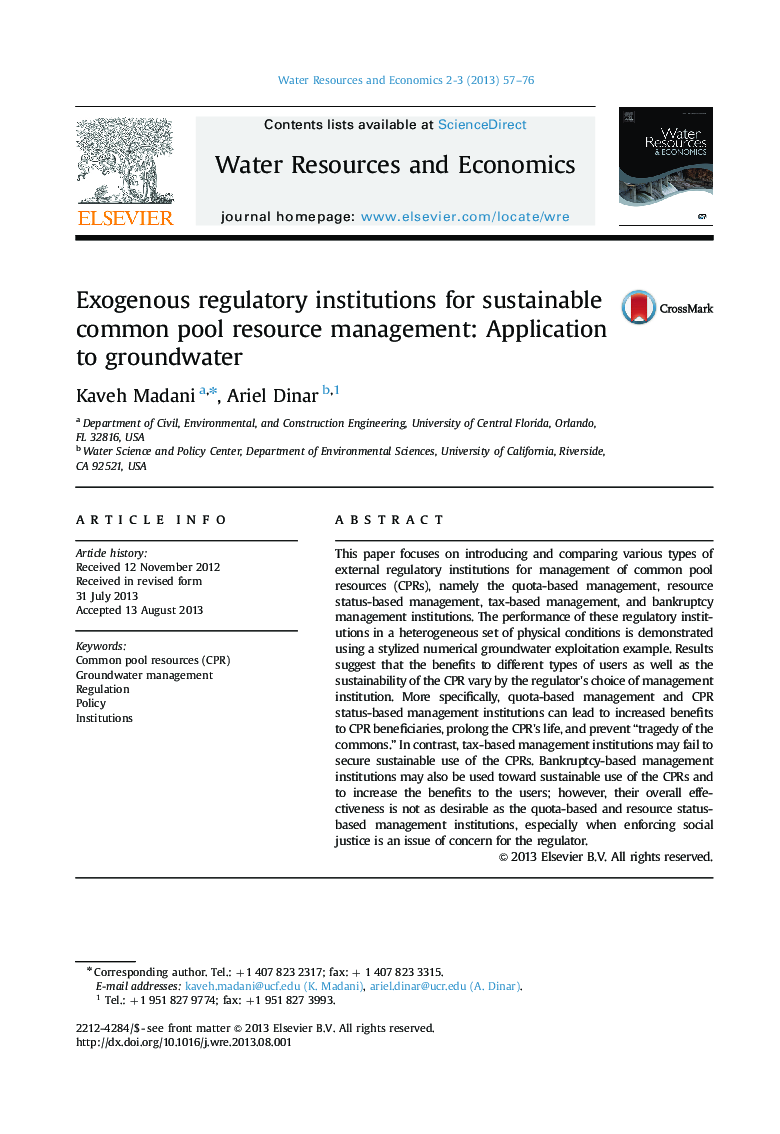| Article ID | Journal | Published Year | Pages | File Type |
|---|---|---|---|---|
| 7390985 | Water Resources and Economics | 2013 | 20 Pages |
Abstract
This paper focuses on introducing and comparing various types of external regulatory institutions for management of common pool resources (CPRs), namely the quota-based management, resource status-based management, tax-based management, and bankruptcy management institutions. The performance of these regulatory institutions in a heterogeneous set of physical conditions is demonstrated using a stylized numerical groundwater exploitation example. Results suggest that the benefits to different types of users as well as the sustainability of the CPR vary by the regulator's choice of management institution. More specifically, quota-based management and CPR status-based management institutions can lead to increased benefits to CPR beneficiaries, prolong the CPR's life, and prevent “tragedy of the commons.” In contrast, tax-based management institutions may fail to secure sustainable use of the CPRs. Bankruptcy-based management institutions may also be used toward sustainable use of the CPRs and to increase the benefits to the users; however, their overall effectiveness is not as desirable as the quota-based and resource status-based management institutions, especially when enforcing social justice is an issue of concern for the regulator.
Related Topics
Life Sciences
Agricultural and Biological Sciences
Aquatic Science
Authors
Kaveh Madani, Ariel Dinar,
